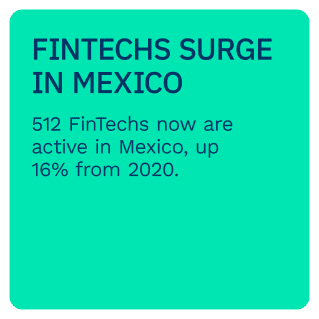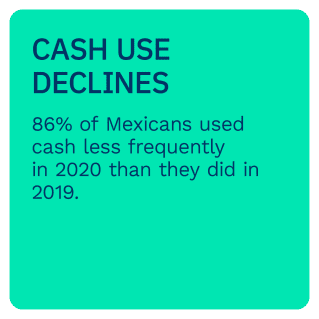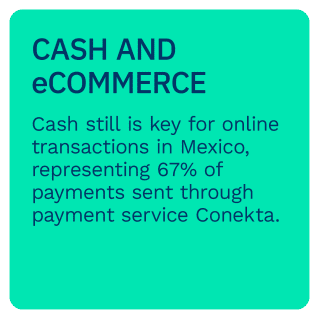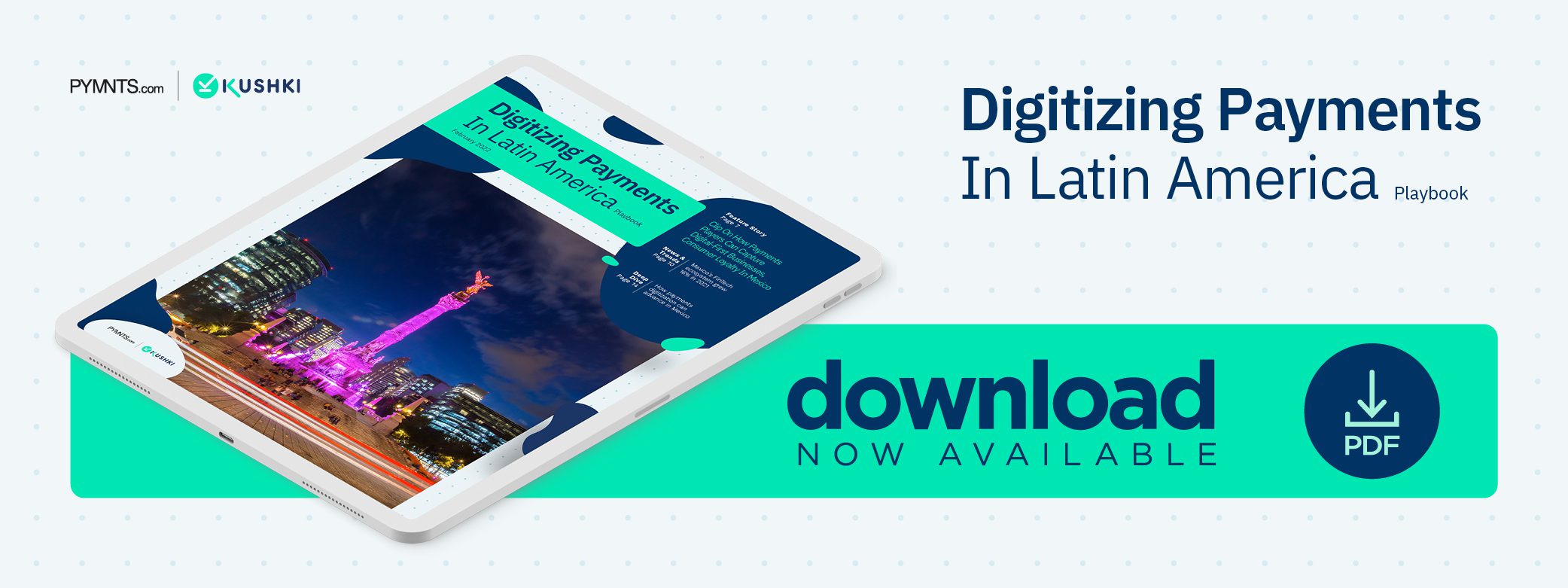Mexico Unicorn Clip on Mobile Wallets and the Digital-First Consumer

Latin America’s online banking and payment ecosystem has expanded rapidly since the start of the pandemic, especially within Mexico, where rising rates of smartphone and internet penetration have pushed the adoption of digital wallets and related tools up. While a high portion of the country’s consumers remains unbanked and thus reliant on cash to make most of their transactions, cash’s dominance within the market weakened in 2020 as the availability of digital tools rose. One December 2020 study found 86% of Mexican consumers surveyed noted they had used less cash that year than they had in the previous year, for example.
Many of the online banking or payment solutions these consumers are utilizing are also unattached to legacy financial institutions (FIs), leading a rising number of FinTechs, neobanks and other digital payment players to eye the market with more interest. However, standing apart in this increasingly saturated space requires payment entities looking to enter Mexico to offer engaging, seamless experiences for consumers or merchants.
In the latest Digitizing Payments In Latin America Playbook, PYMNTS examines how the digital banking and payments space is taking shape in Mexico and how payment players can remain competitive within the market.
Around the Latin American Payments Space
The adoption of digital banking solutions is growing throughout Latin America, leading payment players worldwide to examine the potential benefits of cryptocurrencies within its financial ecosystem, notably for cross-border payments. San Francisco, California-based financial startup Tribal Credit recently teamed up with Latin American cryptocurrency exchange Bitso to create a cross-border payments exchange utilizing digital currencies. The payments system will enable smaller businesses to transfer funds more smoothly from Latin American countries and markets such as the United States, removing some of the friction points typically associated with cross-border payments.
 Interest and engagement in online payment tools have risen within Mexico in particular, causing an expanding number of digital-first financial entities to eye the market with more interest. One recent study found 512 FinTechs are now operating within the country, for example, a figure that represents a 16% bump from 2020 numbers — turning Mexico into one of the most highly-saturated emerging financial markets in Latin America. FinTechs establishing offerings in the country have also reported positive results, with 59% of these companies noting they either saw a jump in revenue or users during the past year. This indicates the adoption of new financial services is expanding within the country.
Interest and engagement in online payment tools have risen within Mexico in particular, causing an expanding number of digital-first financial entities to eye the market with more interest. One recent study found 512 FinTechs are now operating within the country, for example, a figure that represents a 16% bump from 2020 numbers — turning Mexico into one of the most highly-saturated emerging financial markets in Latin America. FinTechs establishing offerings in the country have also reported positive results, with 59% of these companies noting they either saw a jump in revenue or users during the past year. This indicates the adoption of new financial services is expanding within the country.
For more on these and other stories, visit the Playbook’s News and Trends.
How Payment Players Can Capture Merchant Loyalty as Mexico’s FinTech Ecosystem Expands
Smartphone and internet penetration rates have grown within Mexico since the beginning of the global health crisis, causing consumers to consider using digital solutions for banking, shopping or other daily tasks more often. This has also prompted a swell in the number of FinTechs and other digital-first banking entities looking to launch their services within the country, but staying competitive in this increasingly saturated market requires payment players to offer customers — and the merchants at which they spend — access to seamless payment solutions, explained Mariano Carranza, chief financial officer of Mexican-native digital payments and commerce platform Clip.
To learn more about how payment players can stand apart from the crowd in Mexico, visit the Playbook’s Feature Story.
Deep Dive: How Payments Digitization Efforts Can Expand in Mexico
 Access to digital banking solutions is spreading rapidly across Mexico, with one recent study finding 94% of the country’s consumers now use some form of online banking. This indicates both a growing availability of emerging financial tools and a rising willingness by consumers to engage with such services. However, neobanks, payment players and others in the banking space still face several challenges in expanding such access to customers who remain unbanked. Finding ways to reach previously underserved communities is key to the continuing growth of digital banking within the region.
Access to digital banking solutions is spreading rapidly across Mexico, with one recent study finding 94% of the country’s consumers now use some form of online banking. This indicates both a growing availability of emerging financial tools and a rising willingness by consumers to engage with such services. However, neobanks, payment players and others in the banking space still face several challenges in expanding such access to customers who remain unbanked. Finding ways to reach previously underserved communities is key to the continuing growth of digital banking within the region.
To learn more about the barriers to future online payments growth within Mexico and how financial players could potentially overcome them, visit the Playbook’s Deep Dive.
About the Playbook
The Digitizing Payments In Latin America Playbook, done in collaboration with Kushki, examines the latest digital payments developments in Latin America, including how payment services providers can support consumer demands and gain a foothold within the region.
